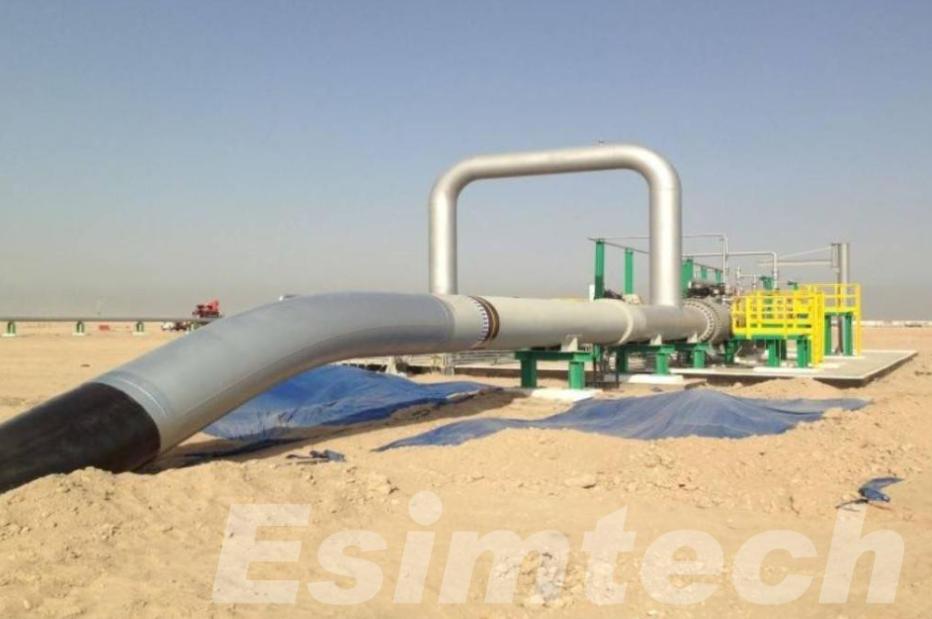Untangling the Lines: A Guide to Wet Gas, Dry Gas, and Oil Gathering Systems

If you’ve ever looked at a map of oil and gas fields, you’ve seen a complex web of pipelines crisscrossing the landscape. These aren't the large-diameter transmission lines you see in the news; these are the vital capillaries of the industry known as gathering systems. Their job is simple in concept: collect raw product from multiple wells and transport it to a central processing facility. However, not all hydrocarbons are created equal, and the type of product being gathered dictates the entire system's design, complexity, and operation.
Let's break down the three main types: oil, wet gas, and dry gas gathering.
Oil Gathering Systems: Moving Liquid Hydrocarbons
An oil gathering system is designed to move crude oil from the wellhead to a storage tank battery or a central treatment facility. The fluid coming from an oil well is rarely pure crude; it’s often a mixture of oil, associated natural gas, and produced water.
Key Characteristics: These systems handle liquids under lower pressures than gas systems. The primary challenge is separation and liquid slugging.
Infrastructure: A typical setup involves flow lines from each well leading to a separator at a central location. This vessel separates the gas, oil, and water into distinct streams. The oil then moves to storage tanks, while the gas is often routed to a separate gas gathering line.
Considerations: Corrosion from produced water (especially if sour, containing H₂S) is a major concern. The system must also be designed to handle wax and hydrate formation, which can block the pipes.
Dry Gas Gathering Systems: The Simple Highway
A dry gas gathering system is the most straightforward of the three. "Dry" gas is almost entirely methane (typically 95%+), with negligible amounts of heavier liquid hydrocarbons. It comes out of the ground ready for minimal processing before being sent to a transmission pipeline.
Key Characteristics: These systems operate at high pressures and deal with a single-phase flow (gas only). This simplifies design and operation significantly.
Infrastructure: Lines from individual wells connect into larger trunk lines, all moving towards a central compressor station. This station boosts the pressure so the gas can enter the long-distance transmission network. Dehydration units are often the only processing needed at the well pad or central point to remove water vapor.
Considerations: The main challenges are managing pressure drop and preventing hydrate formation, which can occur when free water is present at high pressure and low temperature.
Wet Gas Gathering Systems: The Hybrid Challenge
Wet gas sits in the middle. It is primarily methane but contains significant amounts of Natural Gas Liquids (NGLs) like ethane, propane, and butane. These components are gaseous in the reservoir but can condense into liquids during transport as temperature and pressure drop.
Key Characteristics: This is a two-phase (gas and liquid) flow system. The liquids, or "condensate," can cause operational issues like slugging and reduced flow efficiency.
Infrastructure: The layout resembles a dry gas system but is designed to handle liquids. The small-diameter flow lines often slope downward to a central "knockout" vessel or a small separator that removes the condensed liquids. The gas and liquids are then transported separately to a gas plant for full fractionation.
Considerations: This is the most complex gathering system. Engineers must carefully model fluid behavior to manage condensation, prevent liquid blockages, and size equipment correctly. Corrosion from condensed water mixed with CO₂ can also be an issue.
Conclusion
Understanding the fundamental differences between oil, wet gas, and dry gas is the first step in designing an efficient and safe gathering system. An oil system is built for liquid flow and separation, a dry gas system is a high-pressure gas highway, and a wet gas system is a complex hybrid requiring careful management of two-phase flow. Choosing the wrong design can lead to safety hazards, operational inefficiencies, and costly retrofits, making this initial classification absolutely critical.
- Art
- Causes
- Crafts
- Dance
- Drinks
- Film
- Fitness
- Food
- الألعاب
- Gardening
- Health
- الرئيسية
- Literature
- Music
- Networking
- أخرى
- Party
- Religion
- Shopping
- Sports
- Theater
- Wellness


